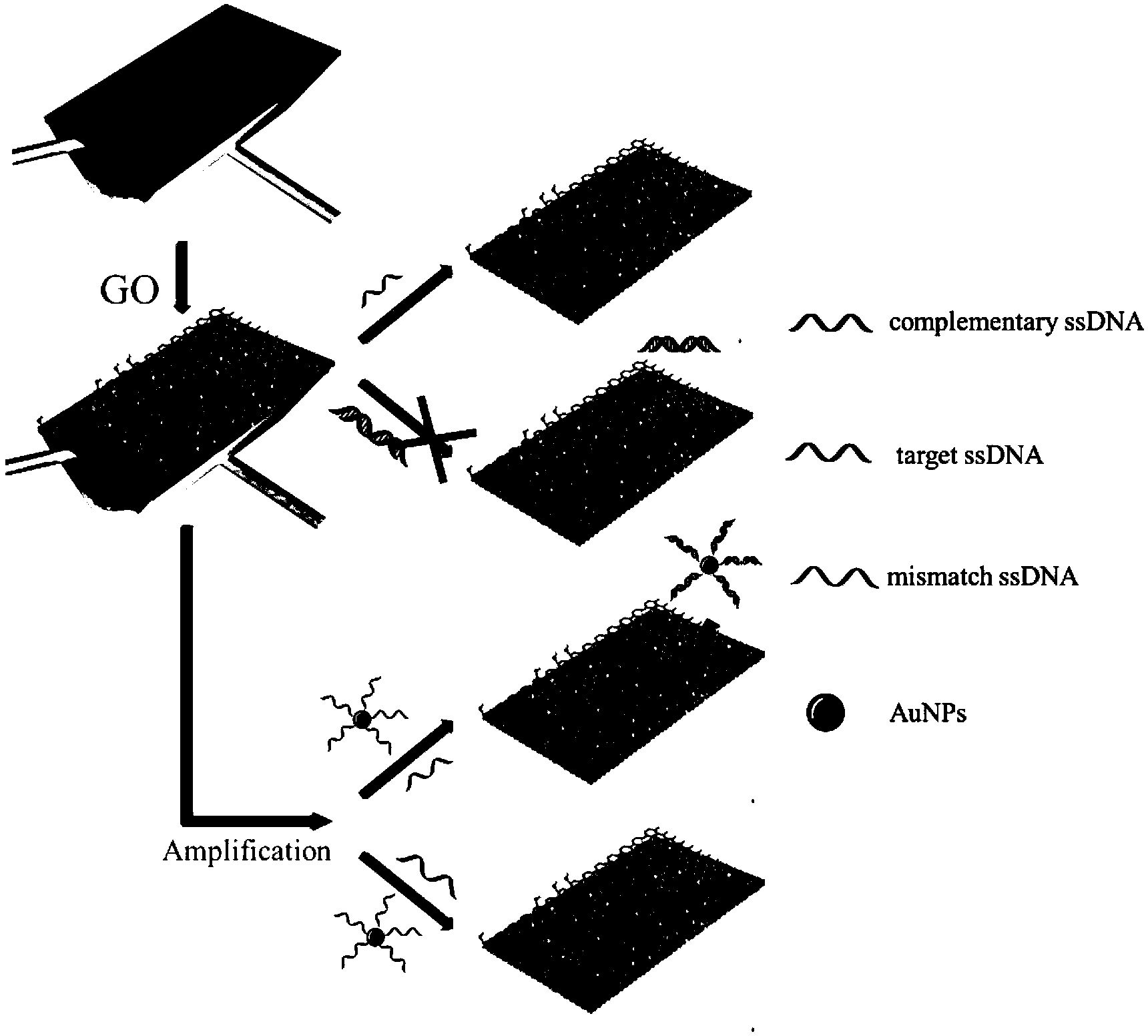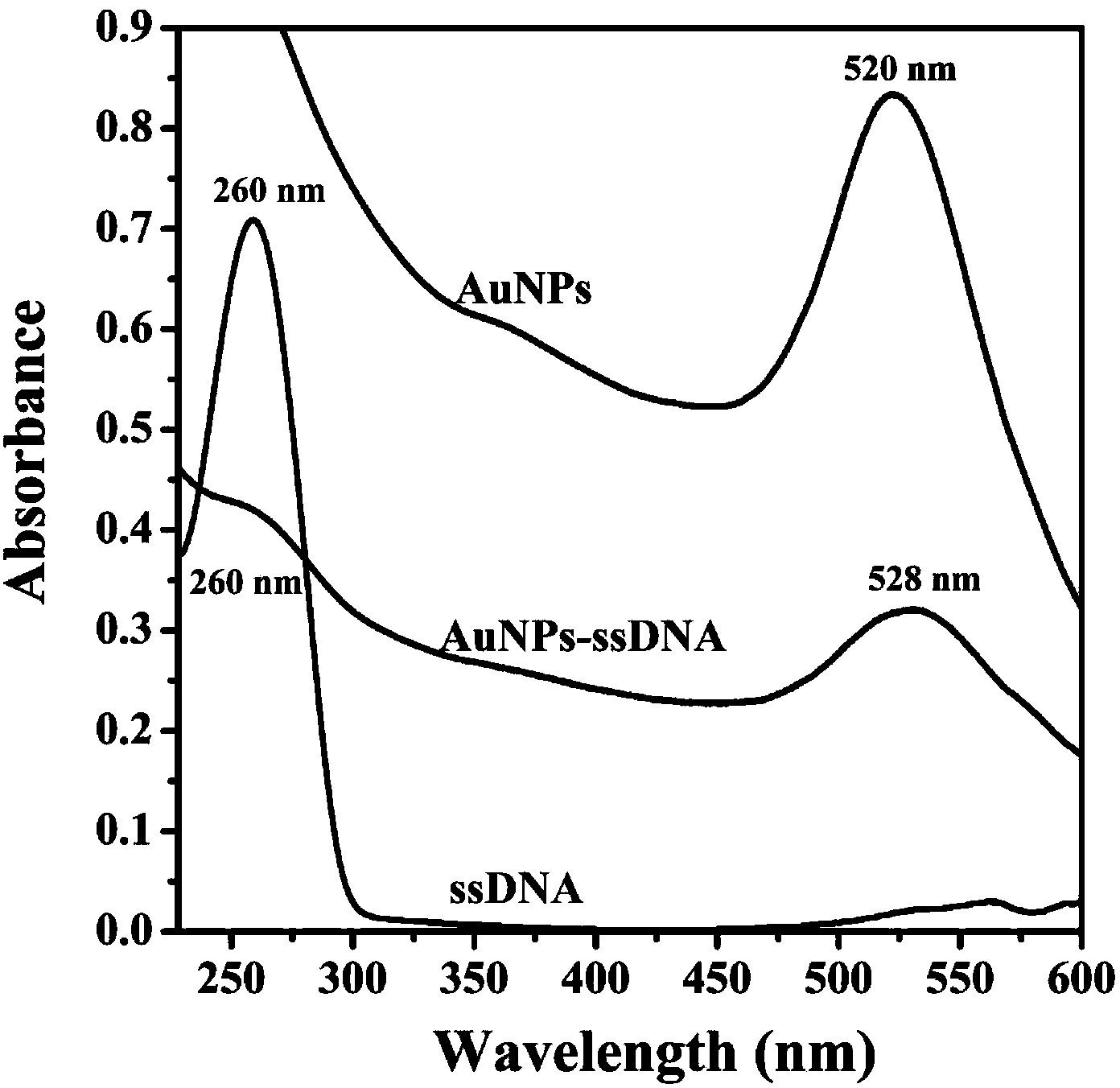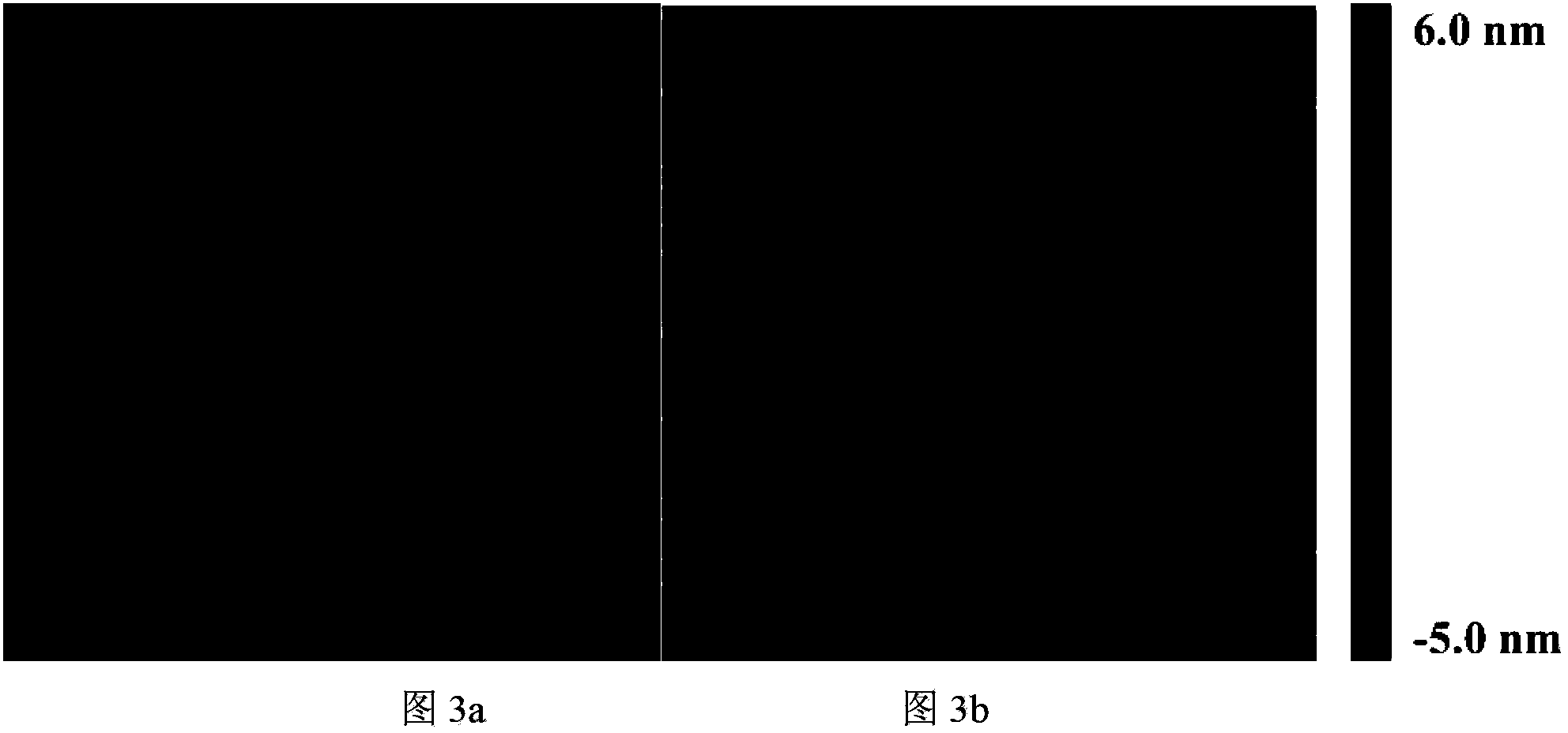Preparation method for surface plasmon resonance DNA sensor based on graphene oxide
A surface plasmon and resonant sensor technology, applied in the direction of material excitation analysis, can solve the problems of low detection limit of single-stranded DNA, low fixed amount, and difficulty in meeting the requirements of ssDNA detection, and achieves good application prospects and detection methods. simple effect
- Summary
- Abstract
- Description
- Claims
- Application Information
AI Technical Summary
Problems solved by technology
Method used
Image
Examples
preparation example Construction
[0031] A method for preparing a graphene oxide-based surface plasmon resonance DNA sensor according to the present invention comprises the following steps:
[0032] First, the preparation of graphene oxide
[0033] The graphite oxide is dissolved in water, and a well-dispersed graphene oxide solution is obtained by ultrasonic stripping, and the concentration of the graphene oxide solution is 0.01-10 mg / ml.
[0034] Second, pass the prepared GO solution into the SPR sample cell, soak the SPR gold film chip in the GO solution for 1-16 hours, and realize the GO assembly on the surface of the SPR chip.
[0035] Third, nine different concentrations (10 -14 -10 -6 M) The base-matched target ssDNA solution is mixed with the competition reactant AuNPs-ssDNA solution, and the hybridization is incubated for 1-24 hours.
[0036] Fourth, pass the above nine solutions into the sample pool according to the high concentration to the low concentration, and the time for each concentration i...
Embodiment 1
[0040] Example 1: Detection method of target single-stranded DNA by SPR sensor assembled with GO
[0041]After GO was assembled on the surface of the SPR chip, when it interacted with single-stranded DNA solution and double-stranded DNA solution respectively, the amount of single-stranded DNA adsorbed on the GO surface was much larger than that of double-stranded DNA. Using ssDNA-functionalized gold nanoparticles (AuNPs-ssDNA) as a competitive reactant, the higher the concentration of the target single-stranded DNA mixed with it, the more double-stranded DNA will be formed, and the less the amount adsorbed to GO, the SPR resonance angle The smaller the change. When the target ssDNA was mismatched, the unmatched ssDNA and AuNPs-ssDNA were all adsorbed on the GO surface.
Embodiment 2
[0042] Embodiment 2: Preparation of gold nanoparticles
[0043] The preparation of 14nm gold nanoparticles is based on the traditional Frens-Turkevich method. In a 1L three-neck flask with a condenser, add 500mL of chloroauric acid with a concentration of 1mM, heat to boiling in an oil bath under condensing reflux and magnetic stirring, and rapidly Add 50 mL of sodium citrate with a concentration of 38.8 mM, the color changes from light yellow to purple, continue to stir and heat for 10 minutes, slowly cool to room temperature, and transfer to a jar for later use.
PUM
| Property | Measurement | Unit |
|---|---|---|
| Concentration | aaaaa | aaaaa |
Abstract
Description
Claims
Application Information
 Login to View More
Login to View More - R&D
- Intellectual Property
- Life Sciences
- Materials
- Tech Scout
- Unparalleled Data Quality
- Higher Quality Content
- 60% Fewer Hallucinations
Browse by: Latest US Patents, China's latest patents, Technical Efficacy Thesaurus, Application Domain, Technology Topic, Popular Technical Reports.
© 2025 PatSnap. All rights reserved.Legal|Privacy policy|Modern Slavery Act Transparency Statement|Sitemap|About US| Contact US: help@patsnap.com



